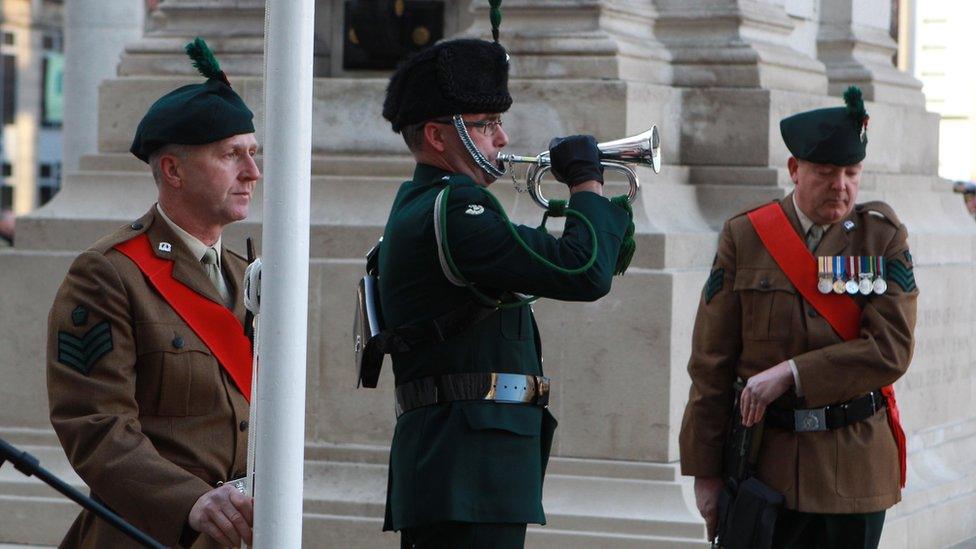Armistice Day: Special remembrance event held in Rostrevor
- Published
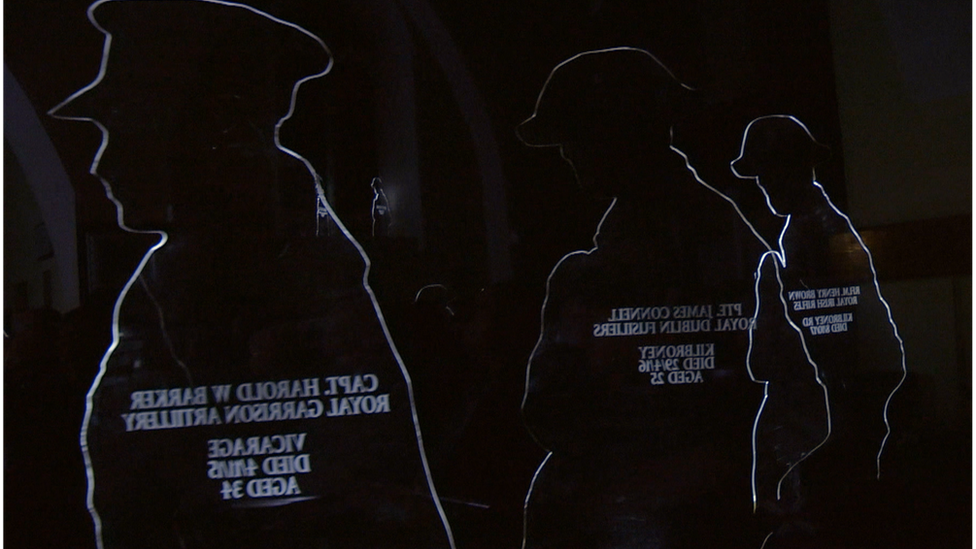
The stories of dozens of men from the Rostrevor area who died in the British Army in World War One have been told in glass memorials
An overwhelmingly nationalist village stopped this week to remember its dead - men who fought and died in the First World War.
Rostrevor may now be mainly Catholic in make-up, but its history is more diverse.
On the way in to the village from Warrenpoint is a 100ft tall obelisk, built in 1826 in memory of Robert Ross.
He was a British Army general who burned down the White House during the War of 1812.
What is now Kilbroney Park was once owned by the Bowes-Lyon family and is said to have been regularly visited by the Queen Mother.
'Completely unremembered'
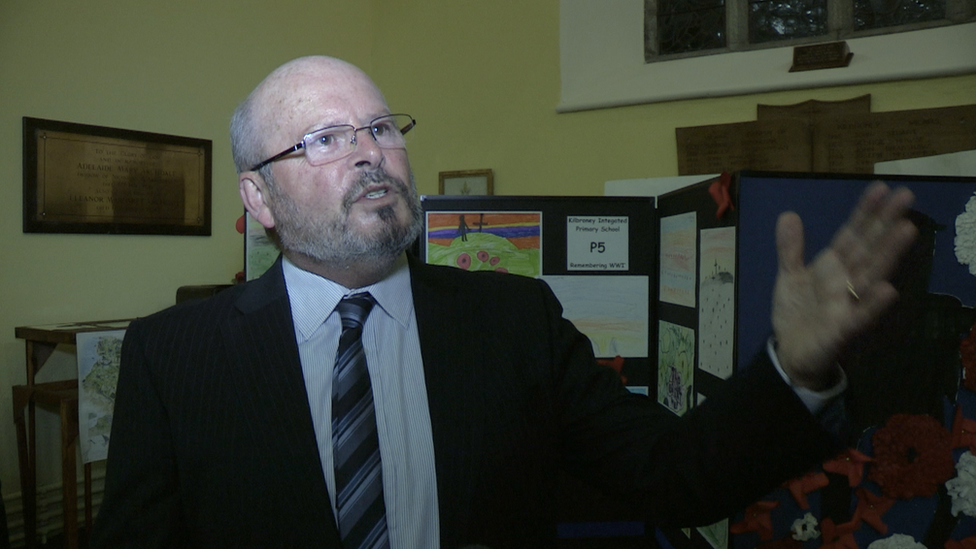
Dr John McCavitt, who organised the event, said the village used to be home to a lot of British Army officers
According to event organiser, Dr John McCavitt, Tuesday's service at the Church of Ireland in the village square offered an opportunity for people to learn about their past.
"In many ways Rostrevor isn't as unlikely a place as it might seem for an event like this," he said.
"At the time, 100 years ago, it was the home to quite a lot of senior British Army officers.
"A lot of it is completely unremembered.
"They have lost touch, so our ambition is to reconnect people. We are doing it now because when the 100th anniversary of Armistice comes around people will hopefully have reconnected. Around 75% of people at this event were Catholics," added Dr McCavitt.
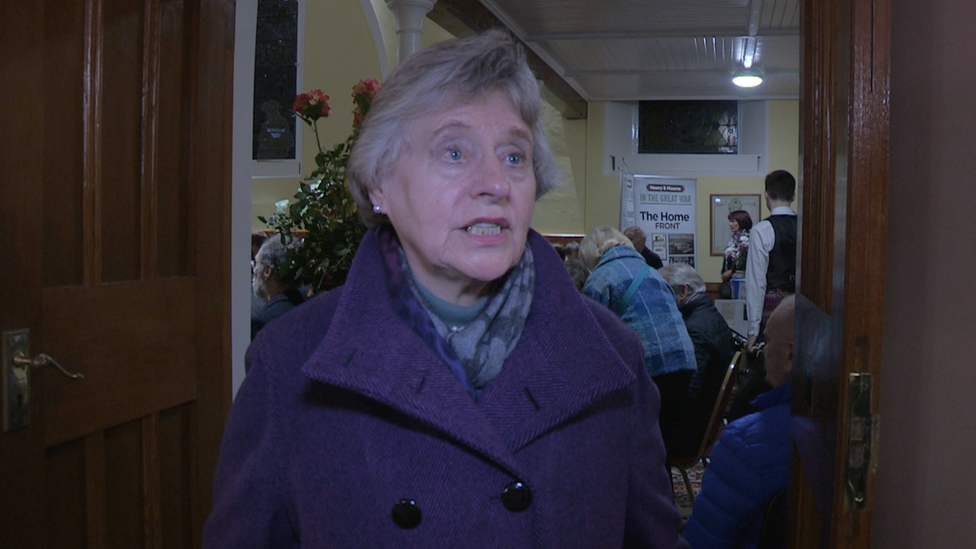
Margaret Mahood said former Irish President Mary McAleese had laid the ground for such a service
Margaret Mahood was born in Rostrevor but now lives in Banbridge.
She said the efforts of the County Down village's most famous recent resident did much to lay the groundwork for an event such as this.
"Mary McAleese did a lot of good building bridges," she said.
Years of research
"When she went to the Ulster Tower in 1998 with the Queen people realised that it wasn't only the Protestant side of the population in Ulster which fought, it was also the Catholic side.
"My husband's uncle, Alan Edgar Mahood, died on the first day of the Somme, 1 July 1916.
"He was aged 18 and was born in Rostrevor. He was one of nine. His brother Fred was a Marine in World War II.
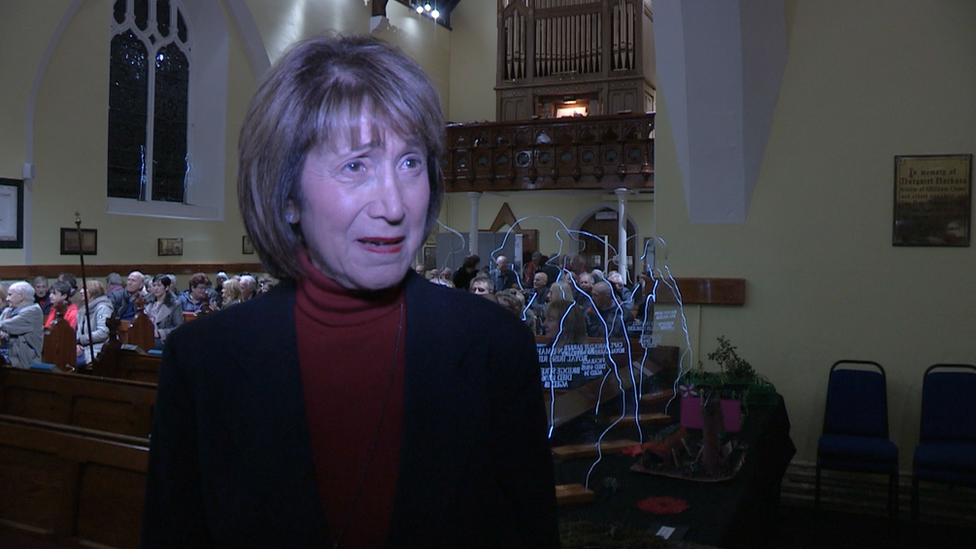
Sheila Cooper-Hanna said her late husband, who researched the subject extensively, "would have loved" to have been present at the service
"Another brother (Bertie) emigrated to America and one of his sons joined the American Forces," added Mrs Mahood.
The stories of dozens of men like Alan Mahood, who fought and died, were told through exhibition, lectures and music. The local Men's Shed produced a series of striking glass memorials, emblazoned with local names as part of their Tommies project.
In terms of the information, much of the research was conducted by the late Fergus Hanna.
His wife Shelia Cooper-Hanna said he would have been delighted with the outcome.
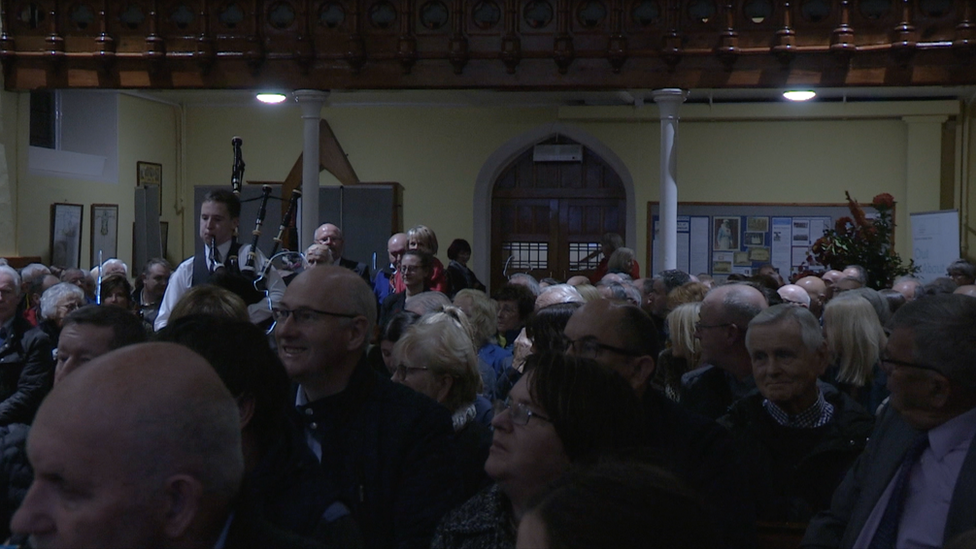
A piper leads the remembrance service in Rostrevor
"He did a lot of the research for this event," she said.
"For years he did World War One research on local people who were in the war. Nobody knew about them. He passed away last year but he would have loved to see this.
"He got a lot of information that people didn't have here. He did this over a period of years. He said nobody knew the local people who were in the war. It took him to libraries and all over the place," added Ms Cooper-Hanna.
With many of the exhibits produced by local primary schools, organisers are hoping Rostrevor's story will not be forgotten again.
- Published12 November 2017
